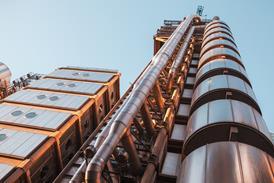The Corporate Manslaughter Act will push health and safety issues into boardrooms, but what can brokers do? asks Anita Anandarajah
?When the Corporate Manslaughter Act received its royal assent on 26 July, it was hailed as a milestone, after almost a decade in the making. There was considerable interest centred on a new offence that would make it easier to prosecute companies for gross failings of health and safety regulations resulting in death.
Previously, only a senior person in an organisation – the “controlling mind” – that had acted with gross negligence regarding the safety of others could be charged with corporate manslaughter.
Health and safety has been a priority for companies since the Health and Safety at Work Act came into force in 1974. Consequently, Great Britain has the lowest rate of fatal accidents in Europe, according to the Health and Safety Executive’s (HSE) most recent comparable data available in 2003.
Construction and agriculture are ranked as the top two industries with the highest number of fatal injuries to workers (see boxes).
But Anthony Morgan, partner at PricewaterhouseCoopers, says that smaller companies will now come under greater pressure to shape up.
“All big companies take health and safety seriously. But for smaller companies, profit is real, and they think they can make more money by cutting corners.
“The Act is aimed at smaller companies which are further down the supply chain and are not thinking about risk.”
But should brokers have a role to play in advising smaller companies on this issue? Biba technical services officer Steve Foulsham concedes that brokers may not have been looking into the Act.
“The difficulty with the Act is that it was by no means certain that it would get on to the statute books until recently. Therefore it was difficult for the market to react.”
Biba will be discussing the Act at its next liability and accident meeting later this month. It will seek to create awareness among members of their additional responsibility to clients.
“The prospect of a health and safety conviction may severely impact on a company's ability to do business
James Shrimpton, Davies Lavery
But is the Act likely to result in an increase in prosecutions, with potential implications for insurers and insureds? Aon technical director John Jones does not expect the number of prosecutions to be significant. “I would be surprised if the annual number reaches double figures.”
Lawyer James Shrimpton, of Davies Lavery, says that prosecution under the new Act will attract negative publicity. A court case would reveal where a company was not dealing with health and safety issues. A conviction could spell the end of its business.
“In some sectors, the publicity generated by the prospect of a health and safety conviction may severely impact on a company’s ability to do business,” he says.
“As part of the tendering process in construction, for example, a company will be asked about previous convictions, and this could have serious implications, particularly for manslaughter.”
The Act is primarily about moving health and safety up the agenda in the boardroom. “It brings to the minds of directors that this is a serious offence that could impact on shares prices, in the case of a public company,” adds Shrimpton.
Morgan says that employers like to work with contractors and suppliers that are safe. “If you develop safe procedures, they are likely to have a knock-on effect, and employers are willing to pay more for a good (safety) record. This is typical in the oil and gas industry where safety is valued more.”
The full impact of the act remains a wait-and-see situation for many. David Huxley, a managing consultant in the human capital risk management team at Marsh, does not see an immediate nor enormous reaction from the insurance industry.
“We are led to believe that insurers are not going to deny cover for legal defence costs. Because we’re in a competitive market, insurers will remain fairly calm – they will lose their competitive edge if they raise their rates by 10%.
“If the market changes to a harder one, the full rate of technical change will be passed on to the customer who can’t demonstrate good risk management practices.”
Industries where workers are at risk of being killed in work-related accidents
Historically, there has been a downward trend in the number of workers killed in work-related accidents, according to the Health and Safety Executive.
However, the rate of decrease has slowed over the last 15 years and there has been very little change in the overall rate over the last five years.
Agriculture and construction have the highest rates of fatal injury, accounting for 46% of fatal injuries to workers.
• In agriculture there were 34 fatalities and the rate of fatal injury was 8.1 deaths per 100 000 workers in 2006/2007. The rate of fatal injury to workers has fluctuated in recent years with no statistically significant trend
• In construction there were 77 fatalities and the rate of fatal injury was 3.7 deaths per 100 000 workers in 2006/2007. Over the past 15 years there has been a statistically significant downward trend in the rate of fatal injury to workers; on average a 3.9% year on year decrease.
However, the higher number and rate for 2006/2007 changes the pattern of continued reduction into one of no change since 2002/2003.
Source: http://www.hse.gov.uk/statistics/fatals.htm


































